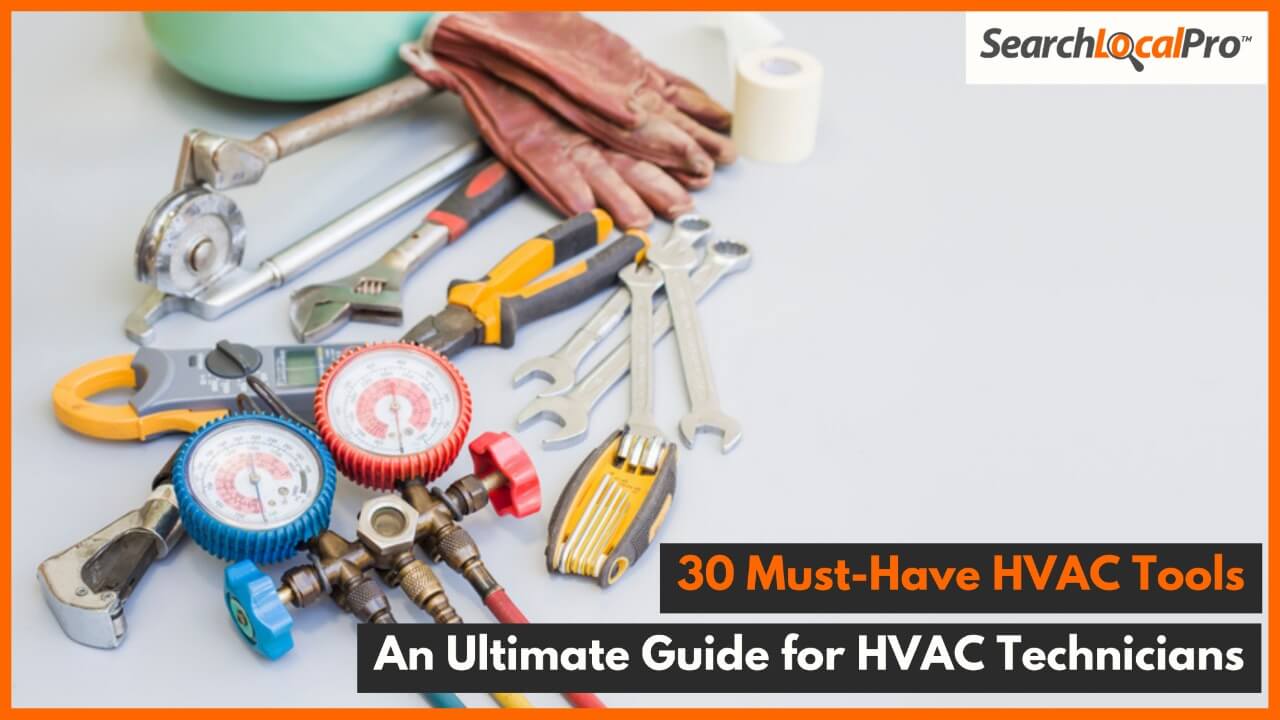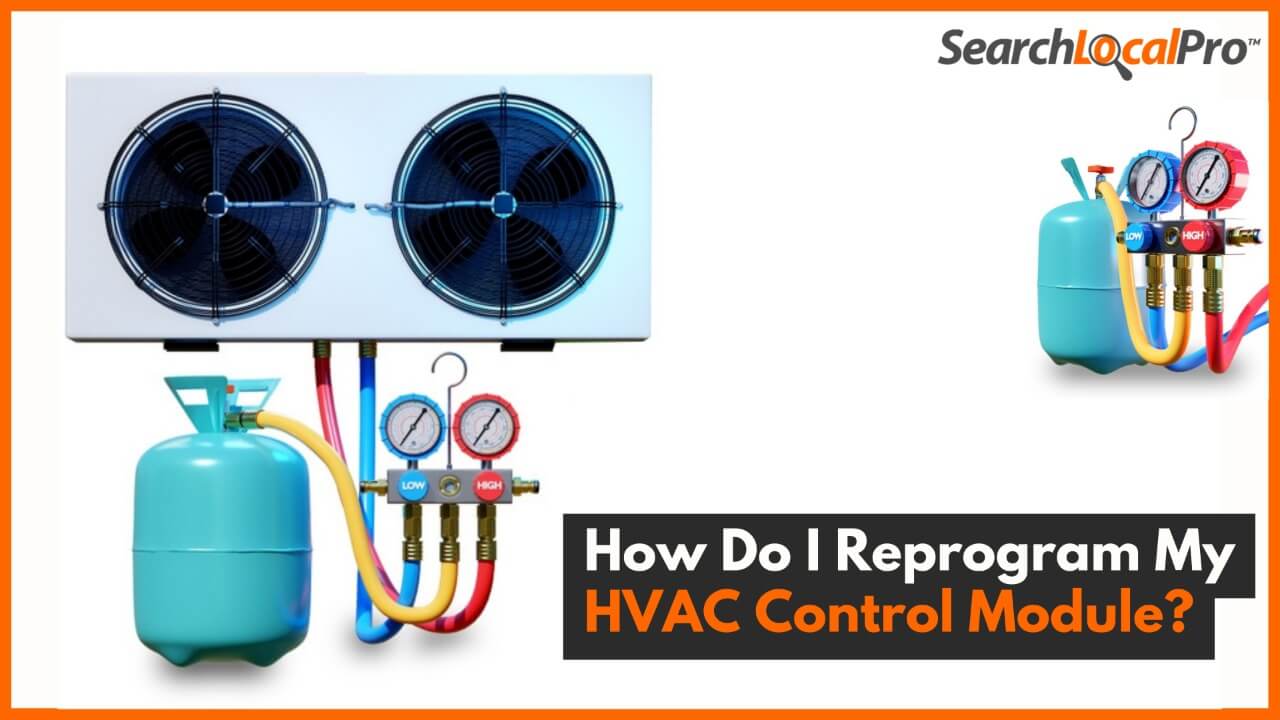Stepping into the world of HVAC, the collection of tools and necessary equipment defines your worth as a professional.
Despite your graduation or the HVAC license to practice, you’ll still need a strong grip on must-have HVAC tools (in terms of purpose and practice).
Therefore, in today’s article, we have shared the purpose, usage, and role of 30 HVAC tools that will definitely have a greater impact on your professional life as an HVAC technician.
Moreover, the ultimate HVAC tool kit can be divided into the following categories:
- Essential HVAC tools
- Advanced HVAC tools
- Safety HVAC tool
So, let’s dig to find more….
Essential HVAC Tools
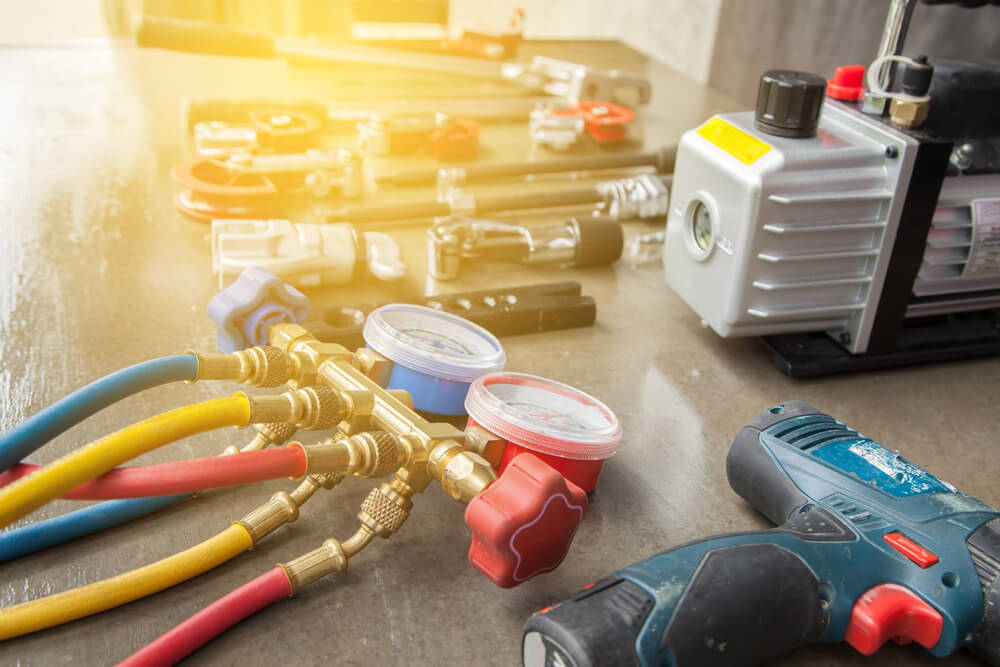
Apart from the thermometers, unit measuring devices, and other advanced tools provided mainly by employers, the HVAC technicians also have to prepare a bag with basic tool sets.
So, let’s move forward and see what tools you must carry in your essential HVAC tool set.
Screwdrivers and Long Neck Nut Driver Set:
Starting from the basics, keep a range of screwdrivers and long-neck nut drivers in your HVAC tool bag, as reaching the tiny nuts and screws deep in the system are tricky.
However, if you can’t carry the whole set, have a multipurpose screwdriver with a head bit and flat bit of sizes 1 and 2 and a small nut driver set of sizes 1/4in, 5/16in, 3/8in, and 5/16in.
Hammer:
A light weighted hammer with an easy grip and fiberglass material will work fine. As there is no heavy function in the HVAC system, a standard-sized or small one is suitable.
Gauge Set:
Air conditioning gauges or manifold HVAC gauges are mandatory in HVAC basic tool set. You need to have multiple HVAC gauge set in your kit as they are used to measure the pressure of the different liquids and gases in the system and helps in diagnosing possible leakages.
Also, when pressure testing, an air conditioning gauge helps you test the vacuum pressure.
Electric Drill Machine:
An electric drill machine is an essential component and is more effective than a wire-based drill machine. Also, keep a few batteries in backup in emergencies so you will never run out of power.
Wrenches Set:
You have to carry an extensive range of wrenches in your bag. You must add small, medium, large, light-duty, and heavy-duty wrenches, from adjustable to pipe wrenches.
For pipe wrenches, getting an 8-inch and 14-inch is workable. While in adjustable wrenches, having sizes 6 and 8 is critical. You can carry small sized in your bag also.
Pliers:
Half of the work is done with pliers, so getting a complete set of pliers having small, medium, and large sizes is beneficial.
If you have a suitable plier size, you can easily reach or grip the small nuts, wires, coils, and other delicate components of the HVAC system. Moreover, don’t forget about getting a nose-pier.
Cutters and Knife:
Add a cutter of half-inch or quarter-inch to your list, as well as a utility knife and duct knife to cutting through the coils, wires, and other components that need to be removed immediately.
Also, keep blades of different sizes with you and change them according to your need.
Flashlight/Headlight:
Flashlights are critical for visualizing the dark area through the HVAC system wires and identifying its components. A reliable flashlight with a few batteries in the backup is mandatory for your HVAC tool list.
The headlight will also perform the tasks effectively. Also, your hands will be accessible by using it.
Pipe Caliper:
A pipe caliper will help you measure the pipes’ sizes and widths. As the HVAC system has plenty of pipes and you might need to replace them for repair and maintenance, the pipe caliper will make your work easy and quick.
An Extension Cord:
Keep an extension cord with you for plugging in the electric machines and devices even if your plus is far or the wire is short. You might also need to use multiple machines simultaneously so that an extension cord can be your savior in such situations.
Fuse Puller:
A fuse puller will help you pull, remove and replace the fuse blocks and holders. You cannot reach every fuse with your hand, which is beneficial for such situations.
Staple Guns:
Staple guns are essential for adequately assembling the ductwork and securing the foil lines and joists for an effective airflow path.
Metal Shears:
If you are meant to repair the HVAC system, you’ll need to cut through the duct metallic sheets while searching for the damaged components. For this purpose, Metal shears will serve you. Add a metal shear of 12 long shears with a 3″ bite in your HVAC list.
Magnetic Level:
A magnetic level is critical for ensuring the proper leveling of the surfaces when you replace or install new devices like thermostats or VFDs in the HVAC systems.
Metallic Crimpers:
A metallic crimper is crucial because you may need to join or connect metallic sheets or structures to repair the HVAC system.
Advanced HVAC Tools
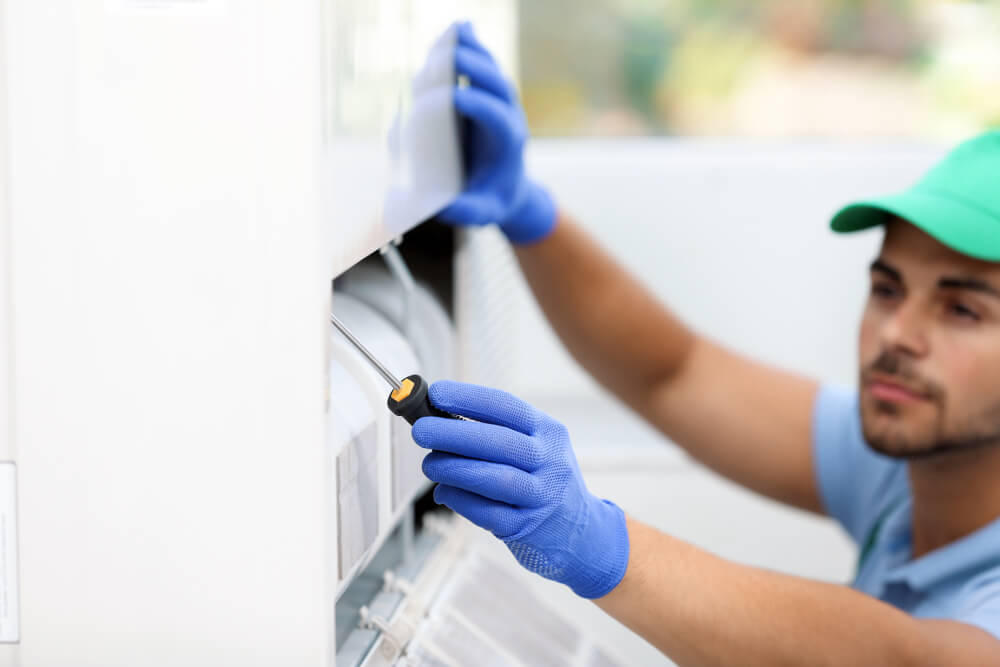
The advanced HVAC toolset is unique, advanced, and expensive, and its importance and up-to-the-mark functionality are no exception.
However, you don’t have to worry as the HVAC companies provide this toolset to the technicians because it is challenging to buy and carry them all the time.
So, let’s see what these are….
Multimeter:
A multimeter, also known as AVO-meter, is an electronic measuring instrument that is used to diagnose the troubleshooting components of the HVAC’s electric system.
It is used to measure the Alternating current and its voltage and Direct Current and its voltage. A built-in thermometer in the multimeter is used to measure the temperature ranging between -40 to 400.
With it, you can have accurate readings of the HVAC system’s voltage, current, and resistance. A version of the multimeter is specially made for HVAC work; make sure you have that device.
Digital Thermometer:
A digital thermometer will help you check the temperature of the HVAC unit you are working in. You can check the temperature of the suction line, liquid line, and discharged air.
The one with the sensory probes is a plus. You can also choose the one with the clamps to attach to the liquid and suction lines for 99% accurate readings.
Again, like a multimeter, there is a specialized HVAC digital thermometer. Make sure you buy that one to add to your HVAC tool bag.
Leak Detector:
They are usually used in the maintenance or repair of refrigeration HVAC systems. They detect the areas with moisture and help identify the primary source of leakage.
Leakage of the gases from refrigerators can lead to sudden breakdown of the compressor or malfunctioning of the system. Make sure you have a leak detector in your bag for its diagnosis.
Nitrogen Regulator:
Although Nitrogen is considered an overall safe gas, its pressure is relatively high in the tanks, which can cause damage to the HVAC system.
For this reason, Nitrogen regulators are used to lowering the pressure of the gases while used from the tank.
Also, a Nitrogen regulator controls the overall release of the gas from the tank. Without it, all the gas will simultaneously escape the container with extremely high pressure.
Saw Blade:
A hand-held saw is critical as the need to cut through many structures and components of the HVAC system, whether through small or large metallic, wooden or plastic structures, can occur at any time.
Always keep an extra blade with you in your bag, as the blades of the saw are replaced frequently because of corrosion.
Coil Fin Straightener:
A coil fin straightener is used to straighten the fins of the compressor and evaporator fans if they are bent or damaged. It is primarily used in Air Conditioner systems but is functional for fixing the fans of every HVAC system.
It also cleans the solidified dust, debris, and contamination from the fins. It is an essential tool for managing the airflow path of the HVAC systems.
HVAC Pumps:
HVAC pumps are an essential factor in repairing HVAC systems. They are strong and pull all the moisture from the lines and coils.
The HVAC pumps are of different sizes and are used according to the type of HVAC you are working in and its work. However, you can add a few of the smaller sizes and a few of the bigger pumps in your tool bag.
Flushing Solvent:
Most HVAC systems are shut down because of obstructions in coils and lines caused by contamination, dust, or debris.
And for this purpose, you will use a flushing solvent to clean the pipes, lines, and coils and clear the air pathway. It also serves as an excellent practice for checking the possible leakage. The solvent is an alcohol-based aromatic solution.
Psychrometer:
A Psychrometer is an electronic measuring device that detects, measures, and rates the relative humidity, airflow, and air mixtures. It is used by both wet-bulb and dry-bulb temperature measuring techniques that result in accurate readings.
As the psychrometer is fulfilling the needs of both the hygrometer and thermometer, it is a mandatory and one of the most crucial tools of the HVAC technician bag.
Digital Refrigerant Gauges:
Although we have already discussed the refrigerant gauges for HVAC systems, they were old-school and analog ones. We are here talking about digital gauges that are more accurate, simple to use, and expensive than older ones.
You only have to turn on the gauge, attach the clamps to the pipes and temperature sensors, and the device will show all the readings on a screen within a minute. Also, these gauges are free from human errors and manual handling complications.
Safety HVAC Tools and Accessories
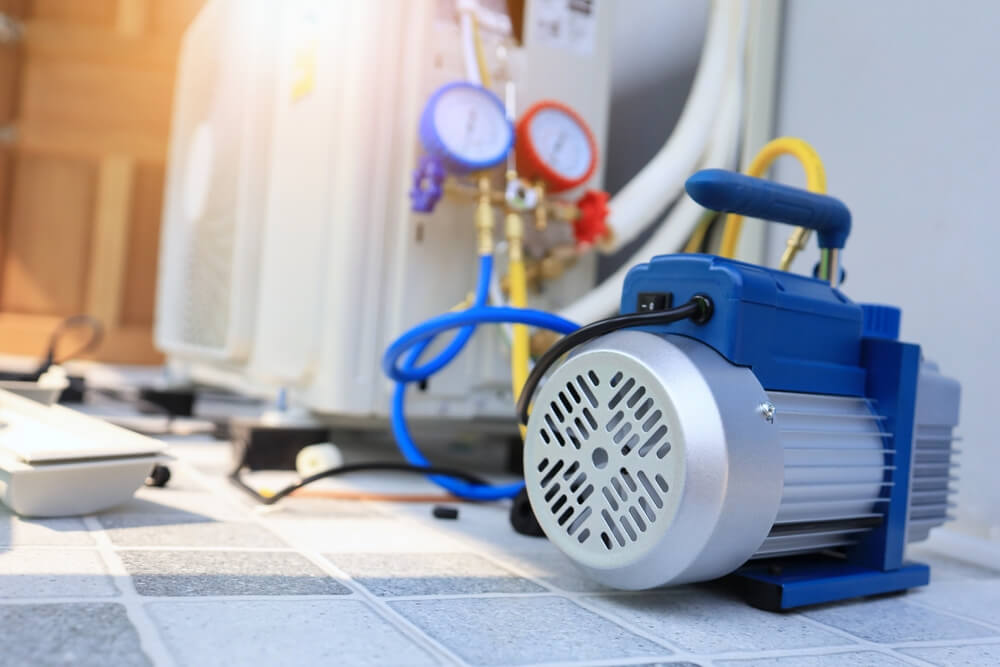
Installation, repair, and maintenance of an HVAC system, whether an air cooling system, refrigerator, heater, or other systems, require high voltage current and metal handling.
And a little negligence can lead to catastrophic and sometimes life-threatening situations. Therefore, we have enlisted essential safety tools and accessories every HVAC technician should carry here.
Safety Glasses:
Safety glasses are mandatory to wear before even opening the first screw of the system, as the debris, dust, germs, and contamination from the inside can fly into your eyes and cause infection.
Some goggles are available with magnification power so you can easily see the screws, nuts, and bolts.
Gloves:
Wearing gloves is essential as the HVAC technicians handle a lot of dangerous chemicals and gases like Freon and Nitrogen gas.
Also, while checking the working, extremely hot air or cold air or dust, debris and contamination can cause damage to the hand’s skin. Therefore, ensure you wear heavy-duty protective gloves before starting your procedure.
Ear Plugs:
Working on the HVAC systems includes operating different heavy-duty and high noise-making machines, multiple at a time.
And the ears of the HVAC technicians working so close to the machines are severely damaged and can result in loss of hearing abilities.
Therefore, wearing earplugs before operating the machines is critical; otherwise, hearing ability can be affected.
Masks:
While working, any harmful liquid, chemical, contamination, debris, or extremely hot or cold air can damage the skin. Even the Nitrogen gas from the tanker is pressurized enough to rip the skin.
Therefore, masks are mandatory to wear while working. Make sure you have multiple of them in your bag so you change them if needed.
Footwear:
As the technicians handle heavy instruments and keep moving up and down the ladder, they should wear comfortable, durable, heavy-duty, and electricity-resistant shoes for their protection.
Final Thoughts
So, here is the list of our basic, advanced, and safety tools and accessories for an ultimate HVAC technician’s bag.
The field of HVAC is undoubtedly not easy, and you have to carry a lot of weight with you during your working hours.
But still, what you can have perfect is your toolbox, containing instruments for your jobs’ every requirement.


